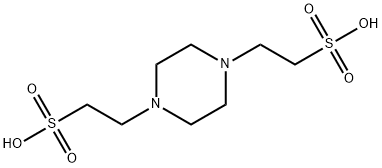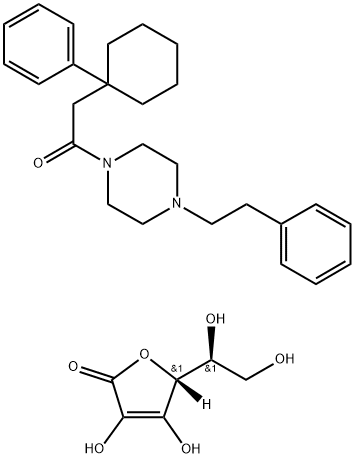MES monohydrate
Synonym(s):MES;2-(N-Morpholino)ethanesulfonic acid;4-Morpholineethanesulfonic acid;2-(N-Morpholino)ethanesulfonic acid hydrate;2-Morpholinoethanesulfonic acid monohydrate
- CAS NO.:145224-94-8
- Empirical Formula: C6H15NO5S
- Molecular Weight: 213.25
- MDL number: MFCD00149409
- EINECS: 224-632-3
- SAFETY DATA SHEET (SDS)
- Update Date: 2024-10-25 16:21:11

What is MES monohydrate?
Description
MES Monohydrate is a zwitterionic buffer that is not absorbed through cell membranes and is virtually transparent in UV light. MES is a buffering agent used in many biological and biochemical applications. It is also used as a running buffer for denaturing gel electrophoresis. The characteristics of low UV absorptivity, minimal reactivity, stable pH and solubility in water allow MES Monohydrate to be used as a Good's buffer.
Chemical properties
white crystalline powder
The Uses of MES monohydrate
MES monohydrate is a buffering agent used in biochemistry and molecular biology that was selected and described by Good et al. It is a zwitterionic, morpholinic buffer that is useful for a pH range of 5.5 – 6.7 and commonly used for cell culture media, as a running buffer in electrophoresis, and for protein purification in chromatography. MES lacks the ability to form a complex with most metal ions and is recommended for use as a non-coordinating buffer in solutions with metal ions. MES is often used in buffered culture media for bacteria, yeast, and mammalian cells. It is toxic towards plants at high concentrations, but can be used in culture media at lower concentrations for plants. Due to low ionic mobility, MES is regarded as an excellent buffer for use in capillary electrochromatography. MES is often employed as a substitute for the highly toxic cacodylate, as well as a substitute for the non-zwitterionic buffers citrate and malate. MES complexes with some organotin(IV) molecules that are being explored as antitumor agents.
MES free acid or MES free acid monohydrate can be mixed with MES sodium salt to acquire desired pH. Alternatively, MES free acid or MES free acid monohydrate can be titrated with sodium hydroxide to attain desired pH.
The Uses of MES monohydrate
MES monohydrate is a biological buffer often referred to as Good?s buffer. It is useful for cell culture media and protein based buffer formulations to maintain a stable environment in solution. It is also used in the purification bioprocesses of antibodies, peptides, proteins, blood components and growth factors. It is a useful resolving agent for very small proteins on bis-tris gels. Buffer solutions are used as a means of keeping pH at a nearly constant value in a wide variety of chemical applications.
The Uses of MES monohydrate
MES Monohydrate has been used:
- To adjust the pH of growth medium to 5.5-7.0 in an in vitro cell wall stress assay
- As a buffering agent to stabilize enzymatic solutions
- As a component of PAGE running buffer
What are the applications of Application
MES monohydrate is often used as a running buffer for resolving very small proteins
What are the applications of Application
MES is one of the "Good" buffers developed for biological applications. MES is not recommended at pH 7.4; other buffers should be considered. All qualities are tested for trace ions and all can be used for biological and biochemistry applications. This product is used in biochemical and biological techniques where highly purified products are needed.
MES Monohydrate has been used:
To adjust the pH of growth medium to 5.5-7.0 in an in vitro cell wall stress assay.
As a buffering agent to stabilize enzymatic solutions.
As a component of PAGE running buffer.
General Description
buffer substance MES
Preparation and handling
A buffer using MES free acid can be prepared by titrating the free acid with sodium hydroxide to the desired pH (pKa =±1). Alternatively, volumes of equimolar MES free acid and sodium MES can be mixed to attain the desired pH. Standard mixing tables using stock solutions to prepare a buffer of a given pH have been published.
Precautions
Solubility/Stability: MES is soluble in water, giving a clear colourless solution at concentrations of 0.5M or higher. The pH of a solution should be between 2.5 and 5, depending on the concentration. Solutions are stable at 2-8°C for months.
Sterilization: Sterilization should be by filteration through 0.2μM filters. Autoclaving is not recommended by any sulfonic acid buffers. If buffers must be nuclease-free, it is best to treat the water, then add the buffer solids after autoclaving. When MES solutions are autoclaved, they turn yellow (although pH does not change measurably. The identity of the yellow breakdown product is unkown.
Properties of MES monohydrate
| Melting point: | >300 °C(lit.) |
| storage temp. | Sealed in dry,Room Temperature |
| solubility | H2O: 0.5 M at 20 °C, clear |
| form | Powder, Crystals or Flakes |
| color | White to pale yellow and/or orange |
| Odor | Odorless |
| PH | 2.5-4.0 (25℃, 0.5M in H2O) |
| pka | 6.1(at 25℃) |
| PH Range | 5.5 - 6.7 |
| Water Solubility | Soluble in water. |
| λmax | λ: 260 nm Amax: 0.025 λ: 280 nm Amax: 0.020 |
| Merck | 14,5902 |
| BRN | 141319 |
| InChI | InChI=1S/C6H13NO4S.H2O/c8-12(9,10)6-3-7-1-4-11-5-2-7;/h1-6H2,(H,8,9,10);1H2 |
| CAS DataBase Reference | 145224-94-8(CAS DataBase Reference) |
Safety information for MES monohydrate
| Signal word | Warning |
| Pictogram(s) |
 Exclamation Mark Irritant GHS07 |
| GHS Hazard Statements |
H315:Skin corrosion/irritation H319:Serious eye damage/eye irritation H335:Specific target organ toxicity, single exposure;Respiratory tract irritation |
| Precautionary Statement Codes |
P261:Avoid breathing dust/fume/gas/mist/vapours/spray. P264:Wash hands thoroughly after handling. P264:Wash skin thouroughly after handling. P321:Specific treatment (see … on this label). P304+P340:IF INHALED: Remove victim to fresh air and Keep at rest in a position comfortable for breathing. P305+P351+P338:IF IN EYES: Rinse cautiously with water for several minutes. Remove contact lenses, if present and easy to do. Continuerinsing. P332+P313:IF SKIN irritation occurs: Get medical advice/attention. P337+P313:IF eye irritation persists: Get medical advice/attention. P405:Store locked up. |
Computed Descriptors for MES monohydrate
| InChIKey | MIIIXQJBDGSIKL-UHFFFAOYSA-N |
| SMILES | S(=O)(=O)(O)CCN1CCOCC1.O |
MES monohydrate manufacturer
Anand Agencies
New Products
4-Fluorophenylacetic acid 4-Methylphenylacetic acid N-Boc-D-alaninol N-BOC-D/L-ALANINOL Tert-butyl bis(2-chloroethyl)carbamate 3-Morpholino-1-(4-nitrophenyl)-5,6-dihydropyridin- 2(1H)-one Furan-2,5-Dicarboxylic Acid Tropic acid S-2-CHLORO PROPIONIC ACID ETHYL ISOCYANOACETATE 2-Bromo-1,3-Bis(Dimethylamino)Trimethinium Hexafluorophosphate (6-METHYL-[1,3]DITHIOLO[4,5-b]QUINOXALIN-2-ONE INDAZOLE-3-CARBOXYLIC ACID 4-IODO BENZOIC ACID (2-Hydroxyphenyl)acetonitrile 4-Bromopyrazole 5,6-Dimethoxyindanone 2-(Cyanocyclohexyl)acetic acid 4-methoxy-3,5-dinitropyridine 2-aminopropyl benzoate hydrochloride 1-(4-(aminomethyl)benzyl)urea hydrochloride diethyl 2-(2-((tertbutoxycarbonyl)amino) ethyl)malonate tert-butyl 4- (ureidomethyl)benzylcarbamate Ethyl-2-chloro((4-methoxyphenyl)hydrazono)acetateRelated products of tetrahydrofuran








You may like
-
 145224-94-8 2-morpholinoethanesulfonic acid 98%View Details
145224-94-8 2-morpholinoethanesulfonic acid 98%View Details
145224-94-8 -
 2-(N-Morpholino)Ethane-Sulfonic Acid CAS 145224-94-8View Details
2-(N-Morpholino)Ethane-Sulfonic Acid CAS 145224-94-8View Details
145224-94-8 -
 MES buffer soln. CAS 145224-94-8View Details
MES buffer soln. CAS 145224-94-8View Details
145224-94-8 -
 MES Monohydrate Buffer for tissue culture CAS 145224-94-8View Details
MES Monohydrate Buffer for tissue culture CAS 145224-94-8View Details
145224-94-8 -
 MES Monohydrate Buffer for cell culture CAS 145224-94-8View Details
MES Monohydrate Buffer for cell culture CAS 145224-94-8View Details
145224-94-8 -
 Morpholino ethane sulphonic acid, monohydrate CAS 145224-94-8View Details
Morpholino ethane sulphonic acid, monohydrate CAS 145224-94-8View Details
145224-94-8 -
 Mes monohydrate 95% CAS 145224-94-8View Details
Mes monohydrate 95% CAS 145224-94-8View Details
145224-94-8 -
 MORPHOLINOETHANE SULPHONIC ACID MONOHYDRATE Extra Pure CAS 145224-94-8View Details
MORPHOLINOETHANE SULPHONIC ACID MONOHYDRATE Extra Pure CAS 145224-94-8View Details
145224-94-8